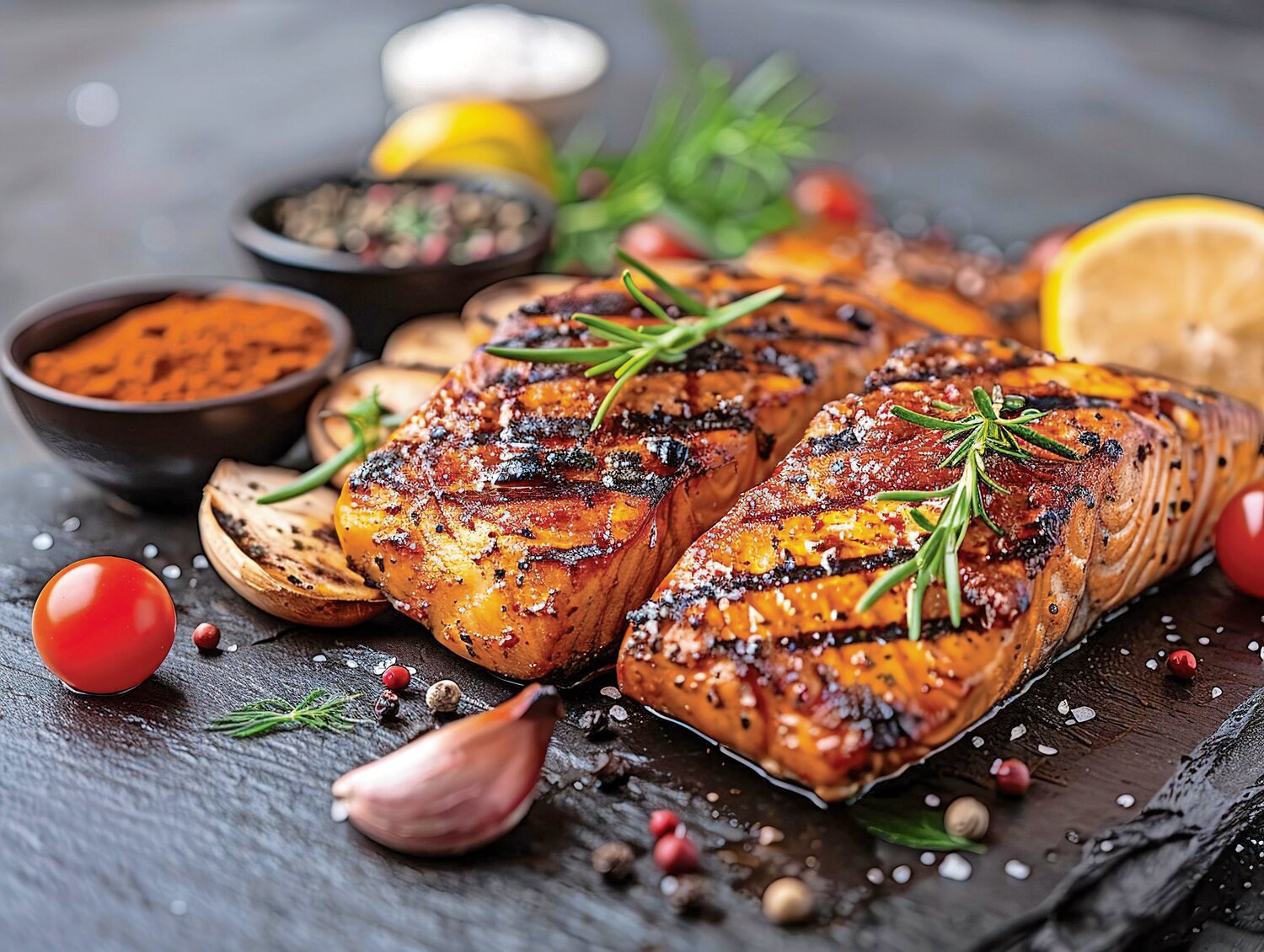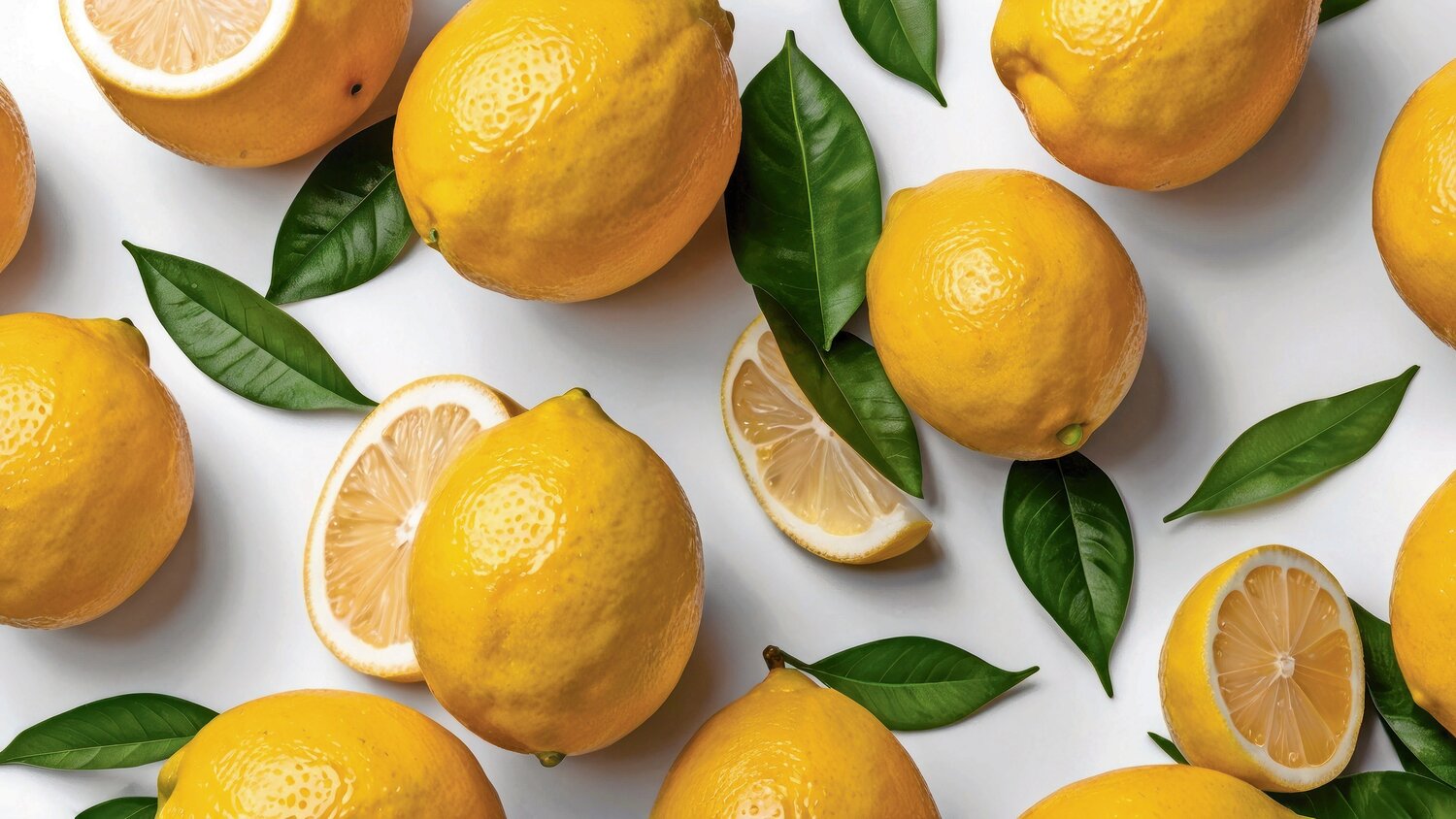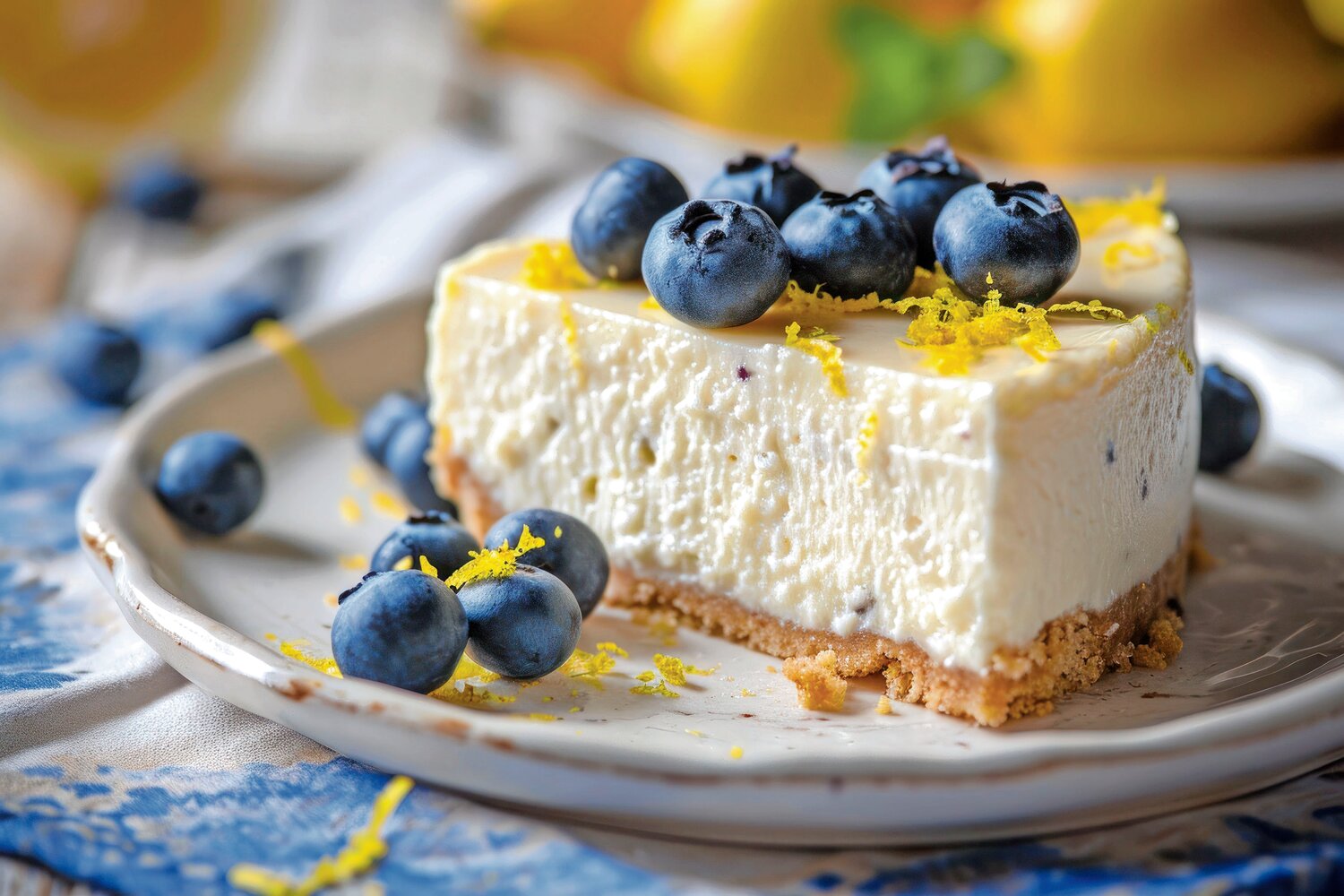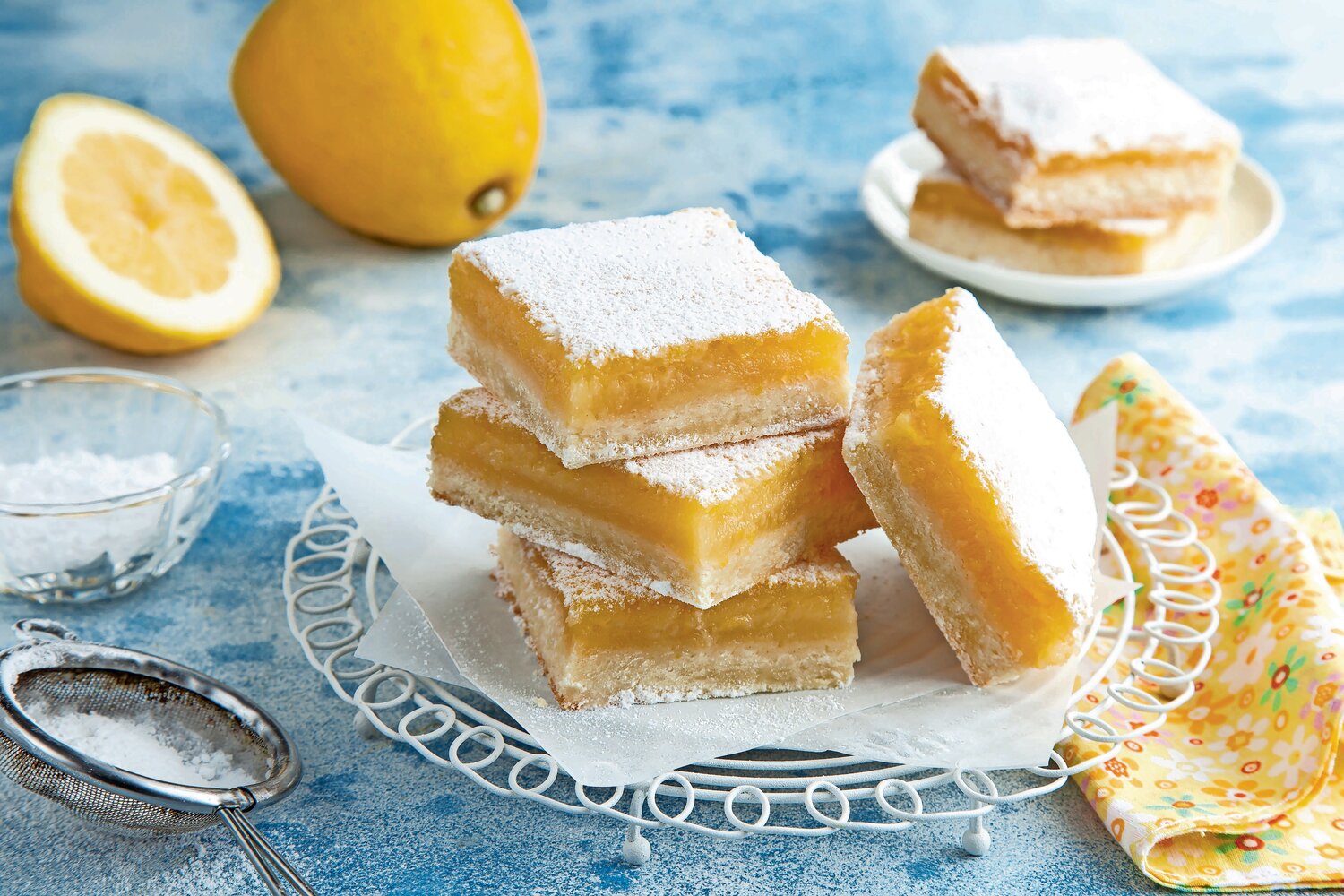Making a delicious summer out of lemons
There is something about bright, tart lemons and hot, humid days that seem to go together perfectly. Remember that lemonade stand you had as a child? I once earned 35 cents and thought I was the richest person on my street!
I magnanimously said I would buy my parents ice cream cones, so we walked to the local ice cream store and I gave the man my 35 cents and got 4 ice cream cones (I was so proud of myself!). The next summer, having learned enough math at 7 to know that 35 cents cannot possibly buy 4 ice cream cones, I increased my lemonade prices to 10 cents a cup.
Lemons, which are harvested year-round, are believed to have existed as early as eight-million years ago in the southern Himalayan region. The small tree made its way to the area of Israel and Persia and there developed as thick-skinned Citron which then bred with a thinner skinned bitter orange and became the more modern Etrog that we know today. Thousands of years later, it evolved into the lemons we know today, branching off from the Citron forever.
There are basically three types of lemons commonly found in grocery stores today.
•Myer lemons are a hybrid of a lemon and a mandarin orange. They have very thin, soft, skins and a short harvest time. They are great for desserts and drinks but are often too sweet for savory dishes. The more common lemons are Eureka and Lisbon.
•Eureka lemons often have a more rounded shape, thinner rinds, and fewer seeds.
•Lisbon lemons have larger knobs at the end of the fruit, the rind appears more dimpled, they are often lighter in color, and firmer to the touch. They often grow larger, but their thicker rind means the amount of juice is often the same as in smaller, Eureka Lemons.
I always look for Eureka, if I can scope them out, as they are easier to juice because of the thinner, more flexible rind. Bags of lemons are often Eureka lemons because they are smaller.
Lemons are indelibly linked to summer; icy lemonade is an iconic summer drink found everywhere from children’s lemonade stands to movies, from the Marx Brothers’ Duck Soup to Laurence of Arbia, Men in Black and many more. There are also even movies with Lemonade in the title.
Lemons are versatile and can be used in any recipe from an appetizer to a main dish to a delectable dessert. Always use fresh lemon juice in any lemon recipe; bottled juice has a preservative, sodium benzoate, that many people (me included) can taste which gives lemon an off flavor. Lemons keep for weeks in the refrigerator and the difference in taste between fresh juice and processed juice is very noticeable.
LEMON HINTS:
•Store lemons in the refrigerator in an airtight bag or container. I, however, often have a bowl of lemons on my dining room table. The aroma is fresh and delicious, and I use them so often, that I rarely have any spoil.
•Lemons produce more juice at room temperature. Remove them from the refrigerator 30 minutes before using or microwave for 10 to 15 seconds.
•Roll the lemons on the counter for a few seconds before squeezing. This helps break some of the little juice sacks and, therefore, helps produce more juice.
•Buy a lemon reamer. These handy little gadgets really get all the juice out. They come in plastic, wood, and stainless steel. OR use your favorite juicer. My dad bought me an electric one in 1982. I still use it when I have many lemons to juice. Otherwise, I use my stainless reamer all the time.
Lemon Garlic Vinaigrette (Pareve)
1/2 cup freshly squeezed lemon juice
1/4 to 1/2 cup extra virgin olive oil
2 tsp. freshly grated lemon zest
1 tsp. grated or minced garlic
Pinch sugar
Salt and pepper to taste
OPTIONAL: Up to 2 Tbsp. cold water to cut the strength of the lemon juice and to allow for less oil.
Mix all ingredients together and mix well. Use on salad, tuna fish, or as a marinade for chicken or fish. Makes about 1 cup.
NOTE: For a milder dressing, use one whole head of roasted garlic. Squeeze out the cloves of cooled garlic and blend in a food processor with the rest of the ingredients. Delicious.
Chicken with Olives and Lemons (Meat)
Delicious hot or the next day cold with a salad.
1 chicken cut into eighths or 4 boneless skinless chicken breast halves
4 Tbsp. flour
1/2 tsp. garlic powder
1/4 tsp. salt
1/2 tsp. freshly cracked black pepper
3 Tbsp. extra-virgin olive oil
1/2 stick, pareve, trans-fat-free margarine
1 onion finely minced
2 to 3 shallots, finely minced
2 to 3 garlic cloves, finely minced, or grated
1/2 tsp. red pepper flakes (optional)
1 cup dry white wine
1 cup chicken stock or broth
1 cup green olives, as many olives as you like, any kids you like
1/4 to 1/3 cup freshly squeezed lemon juice
1 Tbsp. fresh tarragon leaves, finely minced
1/4 cup fresh flat-leaf parsley, finely minced
Garnish: One lemon thinly sliced
Place the flour, garlic powder, salt, and pepper in a zipper plastic bag. Add the chicken pieces a few at a time and shake to coat. Place on a plate.
Heat a large Dutch oven or deep skillet and add the olive oil and pareve margarine. Add the onions and shallots and cook until translucent and softened. Add the garlic and mix for 30 seconds, until fragrant. If you want a bit of heat, add the red pepper flakes to the oil mixture and mix well. Add the flour coated chicken pieces to the skillet and cook 2 to 4 minutes per side, just until lightly browned and each piece releases easily from the pan.
When the chicken is all browned and remove to the plate, add the wine, stock, and olives, and mix. NOTE: Some people like to gently flatten each olive with the flat side of knife to help release the oils and flavor before adding them to the pot. You can if you like. Add the lemon juice and mix well.
Add the chicken pieces back to the pan. Partially cover and simmer for 10 minutes. Add the tarragon and parsley and mix well. Cook, partially covered, until the chicken is cooked through to 165 degrees, 20 to 30 more minutes for cut up chicken, less for boneless breasts. Taste and adjust seasonings, as desired. Place the chicken on a serving platter and garnish with lemon slices, more parsley, and some olives and sauce. Pour the rest of the olives and sauce into a gravy boat and serve with the chicken. Serves 4.
Grilled Lemon and Garlic Grilled Fish (Pareve or Dairy)
This works with any thick fish such as cod, haddock, halibut, red snapper or even salmon. Use a good fish grill cage or a grill basket for the fish.
4 thick fish fillets (5 to 7 oz. each)
1/2 cup extra virgin olive oil
6 to 12 cloves garlic, grated, to taste
2 tbsp chopped fresh chives
Salt and freshly ground black pepper to taste
2 to 3 lemons cut in half crosswise, between the ends
OPTIONAL: Smoked Paprika, sumac seasoning
Heat a grill to high and oil the grates thoroughly.
Mix the garlic, oil, salt and pepper together and set aside.
Using tongs, place the lemons, cut side down, on the grill and leave, undisturbed for 3 to 4 minutes, until grill marks form. Turn the lemon 90 degrees and grill an additional 1 to 2 minutes. Remove to a plate to cool.
Pour half the oil mixture into a small bowl and reserve. Brush the remaining half of the oil on both sides of the fish filets and place them in the grill basket or fish grill. Place on the grill. Cook until cooked through, turning once only if using a special fish grill basket that locks the fish in place. Otherwise, do not flip the fish.
Squeeze one half of a lemon into the remaining oil mixture and brush on the fish once more. Cook until opaque and 145 degrees in the center of the thickest part of the fish. Remove the fish to a platter and squeeze more lemon over the fish. Garnish with fresh chives and a sprinkle of smoked paprika and sumac. Use any remaining lemon juice and oil mixture to make a vinaigrette for salads. The grilled lemon has a sweetened and smoky flavor that is delicious. Serves 4.
Simple Lemon Caper Sauce for Chicken or for Fish (Pareve or Dairy)
This is a delicious sauce for either fish or chicken. To use with chicken, remove the chicken from the pan in which it was cooked and use some of the pan drippings and some of the browned bits in the sauce.
2 small shallots minced
2 Tbsp. canola oil
1 cup chicken or vegetable stock
Juice from one large lemon, about 1/4 cup, more to taste
2 to 3 Tbsp. small capers, drained and rinsed
3 Tbsp. butter or pareve margarine (unsalted) cold
OPTIONAL: Fresh snipped chives or parsley.
Heat the oil in a small skillet. Add the shallots and cook until lightly golden. Add the stock, lemon juice and capers, and simmer until the liquid reduces by about half.
Remove from heat and add the cold butter, for fish, or margarine for chicken. Stir until melted and the sauce is a bit thickened. Taste and adjust seasonings. Add a spoon of fresh chives or parsley. Spoon over fish or chicken. Makes about 1/2 cup.
Easy Blender Lemon Cheese Pie (Dairy)
8 oz. cream cheese, softened
2 Tbsp. salted butter, softened
1/2 cup sugar
1 large egg
2 Tbsp. flour
2/3 cup whole milk
1/4 cup freshly squeezed lemon juice
2 Tbsp. finely grated lemon zest
1 graham cracker crust or for a GF pie, use almond crust or GF graham crackers
Place the cream cheese and the butter in the blender. Puree until smooth. Add the sugar and the egg and blend until well mixed. Add the flour and then the milk. Blend until smooth. Add the lemon juice and grated zest and blend until smooth.
Pour into an 8- or 9-inch graham cracker crust and bake at 350 for 30-35 minutes. Remove from the oven, cool and chill until cold. Garnish with fresh mint, berries, and/or thin candied lemon slices. Serves 8 to 10.
Perfect Lemonade with Raspberries or Watermelon (Pareve)
2 cups Simple Syrup*
2-1/2 cups freshly squeezed lemon juice
1 pint fresh raspberries
Watermelon to equal 1-2/3 cups cubed
Water to taste (4 to 6 cups)
*To make Simple Syrup, place two cups sugar and two cups water in a heavy saucepan. Bring to a boil and boil until all the sugar is dissolved, brushing down the sides of the pan with a wet brush, about 2 to 3 minutes. Allow to cool. Pour into a Tupperware-style container and store in the refrigerator for up to two weeks.
Add the syrup to the lemon juice and stir. Add water to taste. Puree the raspberries in a blender and strain through a fine mesh sieve. Discard seeds. Add to the lemonade. For watermelon lemonade, remove all seeds, puree the watermelon in the blender, and add the puree to the lemonade.
For a real treat. Wet the rim of a glass and swirl it in a bowl of sugar. Freeze the glass for about 15 minutes, fill with ice and lemonade and garnish with lemon slices or fresh mint. Makes about 10 cups.
Cool, Melt-In-Your-Mouth, Lemon Bars (Dairy)
1-3/4 cups unbleached flour
2/3 cup confectioners’ sugar
1/4 cup plus 2 tsp. Cornstarch
1-1/2 sticks well chilled butter, cut into small pieces
1 tsp. finely grated lemon zest
Coat a glass or ceramic 9x13 dish with butter and line with waxed paper or parchment, leaving long ends (about 2 inches) on either side. Butter the surface of the paper that is within the pan.
Place the flour, sugar and cornstarch in the bowl of a food processor. Pulse to mix. Add the butter and pulse until the mixture resembles coarse cornmeal. Add the lemon zest and pulse once or twice to mix.
Pour the crust mixture into the pan and press evenly along the bottom and slightly up the sides. Refrigerate for 45 minutes.
Preheat the oven to 350 degrees. Bake for 20 to 25 minutes, or until golden brown. While the crust is baking, make the filling.
FILLING:
4 extra-large (large are fine) eggs
1-1/2 cup sugar
3 Tbsp. flour
2 tsp. grated lemon zest
3/4 cup (generous) freshly squeezed lemon juice
1/3 cup half and half
Whisk the eggs and add the rest of the ingredients.
Remove the crust from the oven, reduce the heat to 325 degrees, and allow the crust to cool for about 10 minutes. Whisk the filling again and pour gently into the crust. Return to the oven and bake for 20 minutes until the filling looks set and feels set when touched.
Remove from the oven and cool. Before serving, sift confectioner’s sugar over the top and garnish with sugared lemon slices.* Run a knife around the lemon squares and remove, using a spatula under the paper. Place on a serving tray and then cut, rinsing the knife in hot water between cuts. For less formal eating, cut while in the pan and remove individual squares. Refrigerate after cutting the squares.
(*To make sugared lemon slices, mix one cup of sugar and 1/2-cup of water in a small saucepan. Bring to a boil. Cut a lemon into very thin slices and cut the slices in half. Add the slices to the pan and let simmer for about 20 minutes. Don’t stir but lift the bottom slices up from the pan to avoid sticking. Stirring will break up the slices and they won’t look pretty. Watch the water level carefully and add more as needed. Refrigerate and use for garnish.)
Gluten-Free, Non-Dairy Lemon Almond Squares
or Tart (Pareve, GF)
Several friends are GF these days, so here is a recipe suitable for them that is equally as delicious and refreshing as lemon squares made with regular flour. You can make these as squares or as a lemon pie in a 10-inch pie plate. Top the pie with thin, candied lemon slices for a beautiful presentation.
CRUST:
2-1/2 to 3 cups almond flour (3 cups for 9x13 pan, 2-1/2 cups for 10-inch pie plate)
1/2 cup sugar
2 tsp. lemon zest
4 Tbsp. tapioca starch
1/3 tsp. salt
1 stick cold pareve margarine, cut into small pieces
FILLING:
3 extra-large eggs
1-1/2 cups sugar
1/2 cup freshly squeezed lemon juice
3-1/2 Tbsp. tapioca starch
GF Confectioners’ sugar for dusting
OPTIONAL: 2 tsp. lemon zest
Lightly grease a 9X13 pan or 10 to inch pie plate and set aside. Preheat the oven to 350 degrees. Juice the lemons and set aside.
Place the almond flour, sugar, lemon zest, tapioca starch, salt and margarine in the bowl of a food processor and pulse until the mixture resembles wet sand.
Press into the prepared pan and up the sides about one-half inch.
Place in the oven and bake until golden, about 10 to 14 minutes.
While the crust is baking, prepare the filling. Place the eggs, sugar, lemon juice and zest, and tapioca starch in a medium bowl. Make sure there are no lumps of the starch. Whisk thoroughly and pour over the hot crust. Place back in the oven for 15 to 25 minutes until the top cracks just a bit and looks completely set.
Remove from the oven and let cool completely. Refrigerate until ready to serve. Dust the top with confectioners’ sugar and cut into squares. Makes 12 to 24 squares.















